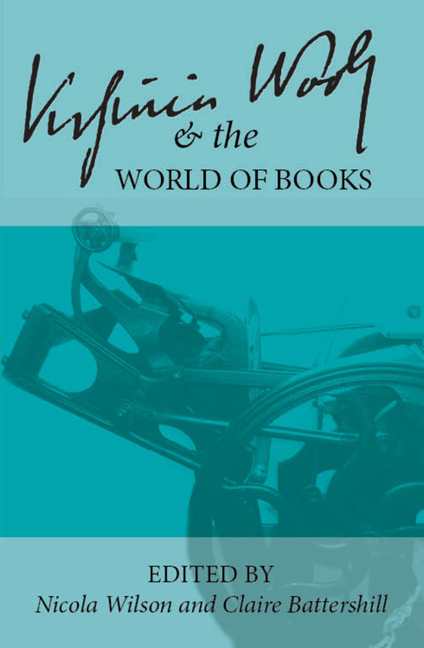 Virginia Woolf and the World of Books
Virginia Woolf and the World of Books Book contents
- Frontmatter
- Contents
- Introduction
- List of Abbreviations
- Keynote
- In the Archives
- Craftsmanship
- The Hogarth Press
- Hours in A Library
- The Art of the Book
- Ekphrastic Writing, Illusive Illustration: Vanessa Bell's Embroideries for Virginia Woolf's “Kew Gardens”
- “The active and the contemplative”: Charles Mauron, Virginia Woolf, and Roger Fry
- Vanessa Bell's “tiny book”: Woolf, Impressionism, Roger Fry, and Anti-Semitism
- The Art of the Narrative
- Making New Books: Creative Approaches
- The Book in the World: Woolf's Global Reception
- Editing and Teaching Woolf
- Intertextuality
- Lives in Writing
- Notes on Contributors
“The active and the contemplative”: Charles Mauron, Virginia Woolf, and Roger Fry
from The Art of the Book
- Frontmatter
- Contents
- Introduction
- List of Abbreviations
- Keynote
- In the Archives
- Craftsmanship
- The Hogarth Press
- Hours in A Library
- The Art of the Book
- Ekphrastic Writing, Illusive Illustration: Vanessa Bell's Embroideries for Virginia Woolf's “Kew Gardens”
- “The active and the contemplative”: Charles Mauron, Virginia Woolf, and Roger Fry
- Vanessa Bell's “tiny book”: Woolf, Impressionism, Roger Fry, and Anti-Semitism
- The Art of the Narrative
- Making New Books: Creative Approaches
- The Book in the World: Woolf's Global Reception
- Editing and Teaching Woolf
- Intertextuality
- Lives in Writing
- Notes on Contributors
Summary
In the following passage, the French aesthetician Charles Mauron (1899–1966) underscores the central dialectic in his book Aesthetics and Psychology, which was translated by Roger Fry and Katherine John and published by the Hogarth Press in 1935:
in life we scarcely look or listen at all, except in view of some future activity. […] Now the unreality of the work of art debars us straight off from any action of this kind. The first words the artist seems to say to us are: “Look, listen, but don't move.”
The opposition indicated here, between what Mauron goes on to elaborate as “two attitudes of mind,” the “active” and the “contemplative,” will be central to my discussion in this essay (AP 28). I shall propose that Mauron's theory of art and psychology represents a nexus between Roger Fry, Virginia Woolf, and Bloomsbury aesthetics, which is rarely examined, yet deserves further attention. Reading Mauron's work alongside these figures will open up a more nuanced understanding of debates about formalism, aesthetic purity, and contemplative attention which concerned all three. I will begin by tracing significant biographical and textual connections; however, my aim is not so much to uncover channels of direct influence; rather, I'd like to present a collage of reverberating texts in which metaphors and ideas overlap.
So who was Charles Mauron and what role did he play in shaping the aesthetics of both Fry and Woolf? One of the few English language critics to examine Mauron's work at any length, Linda Hutcheon, defines him as “both a literary critic, intent upon investigating the forms and structures, as well as the meaning, of literary objects, and an aesthetician, concerned with the nature of the aesthetic experience” (vii). Like Fry, Mauron had received a scientific training, but he sought to integrate the experimental methods of science into his investigations in art and literature. Fry was immediately attracted to the ideas of the Frenchman twenty years his junior when they met in 1919 in Provence, and as Woolf affirms in her biography of Fry; this was one of the most valued friendships of his life.
- Type
- Chapter
- Information
- Virginia Woolf and the World of BooksSelected Papers from the Twenty-seventh Annual International Conference on Virginia Woolf, pp. 128 - 134Publisher: Liverpool University PressPrint publication year: 2018


